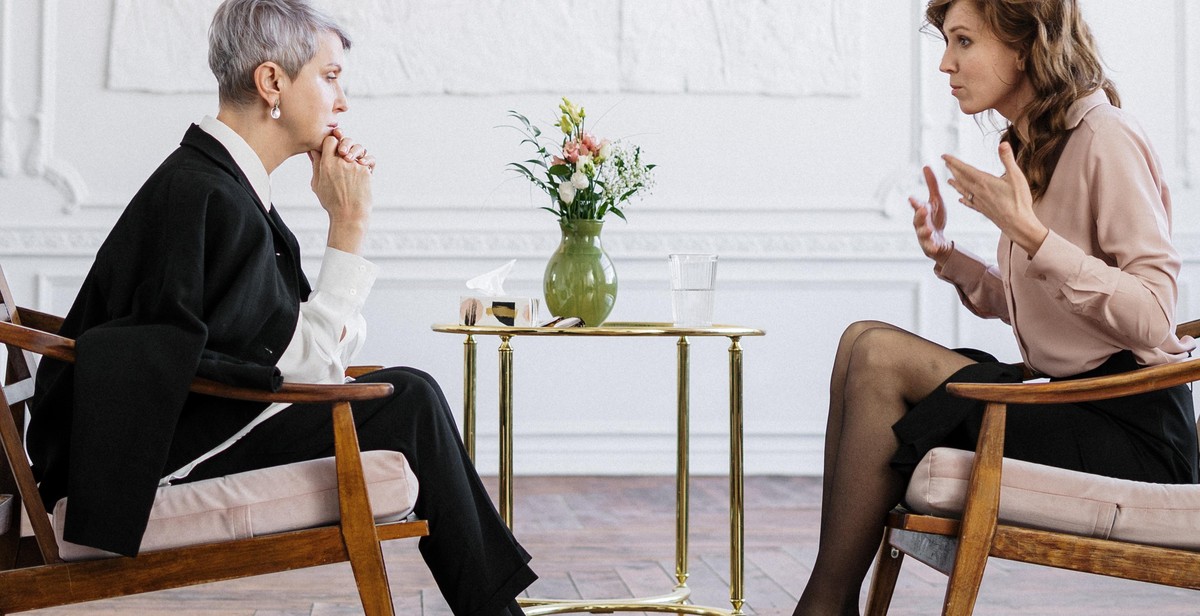Bridging Communication Gaps in Your Relationship
Communication is the foundation of any successful relationship. It is the glue that holds two people together and creates a strong bond. Without proper communication, misunderstandings and conflicts can arise leading to a breakdown in the relationship.
Why Communication is Essential in a Relationship
Effective communication is essential in any relationship, whether it is romantic or platonic. It helps to build trust, intimacy, and understanding between two people. When partners communicate openly and honestly, they are able to express their feelings, needs, and desires, and also listen to their partner’s perspective. This leads to better problem-solving, conflict resolution, and a stronger emotional connection.
The Effects of Poor Communication in Relationships
Poor communication can have disastrous effects on a relationship. It can lead to misunderstandings, hurt feelings, and resentment. When partners don’t communicate effectively, they may start to feel disconnected and emotionally distant from one another. This can cause a breakdown in the relationship, leading to feelings of loneliness, frustration, and even the end of the relationship.
In this article, we will discuss practical ways to bridge communication gaps in your relationship and improve your communication skills with your partner.
Identifying Communication Gaps
Effective communication is crucial for any relationship to thrive. However, couples often experience communication gaps that can lead to misunderstandings, conflicts, and ultimately, the breakdown of the relationship. Identifying these gaps is the first step in bridging them and fostering healthy communication.
Different Communication Styles
One of the most common communication gaps in relationships is the difference in communication styles. Each person has a unique way of expressing themselves, and these styles can clash, leading to misinterpretation and frustration.
For instance, one partner may be more direct and to the point, while the other may prefer to beat around the bush. This can lead to misunderstandings and hurt feelings, as one partner may feel like the other is not being honest or forthcoming.
Recognizing Communication Barriers
Communication barriers are obstacles that hinder effective communication. These can include cultural differences, language barriers, emotional issues, and physical barriers such as hearing impairments.
It is vital to recognize these barriers and work together to overcome them. For example, if one partner speaks a different language, it may be helpful to learn some basic phrases or take language classes together. If emotional issues are causing communication gaps, seeking the help of a therapist can be beneficial.
The Importance of Active Listening
Active listening is a critical component of effective communication. It involves fully concentrating on what the other person is saying, without interrupting or formulating a response in your head.
Active listening also means paying attention to nonverbal cues, such as body language and tone of voice. By actively listening, you can better understand your partner’s perspective and avoid misunderstandings.
Overall, identifying communication gaps is crucial for building a strong and healthy relationship. By recognizing different communication styles, understanding communication barriers, and practicing active listening, couples can bridge these gaps and improve their communication.

Strategies to Bridge Communication Gaps
Effective communication is the foundation of a healthy relationship. However, communication gaps can occur due to various reasons such as misunderstandings, different communication styles, and emotional barriers. These gaps can cause conflicts, misunderstandings, and even breakups. Fortunately, there are several strategies that can help bridge communication gaps and improve the quality of communication in your relationship.
Practice Empathy
Empathy is the ability to understand and share the feelings of others. When you practice empathy, you are more likely to listen actively, understand your partner’s perspective, and respond in a way that shows that you care. To practice empathy, try to put yourself in your partner’s shoes and imagine how they are feeling. Validate their emotions and show that you understand their point of view.
Be Clear and Concise
Clear and concise communication helps to avoid misunderstandings and confusion. When communicating with your partner, be specific about what you want to say. Avoid using vague or ambiguous language that can be interpreted in different ways. Also, be mindful of your tone of voice and body language, as these can affect how your message is received.
Use ‘I’ Statements
‘I’ statements are a powerful communication tool that can help to express your feelings and needs without blaming or accusing your partner. Instead of saying “You never listen to me,” try saying “I feel unheard when you interrupt me.” This way, you are expressing your feelings without attacking your partner, and you are more likely to be heard and understood.
Avoid Blaming and Accusations
Blaming and accusing your partner can make them defensive and less likely to listen to you. Instead of blaming, focus on expressing your feelings and needs in a non-judgmental way. This can help to create a safe space for communication and encourage your partner to respond in a positive way.
Create a Safe Space for Communication
Creating a safe space for communication is essential for bridging communication gaps. This means creating an environment where both partners feel comfortable expressing their feelings and needs without fear of judgment or criticism. To create a safe space, listen actively, avoid interruptions, and validate your partner’s emotions. Also, be mindful of your body language and tone of voice, as these can affect how your partner perceives your message.
By practicing empathy, using ‘I’ statements, avoiding blaming and accusations, being clear and concise, and creating a safe space for communication, you can bridge communication gaps and improve the quality of communication in your relationship.

The Role of Technology in Communication
Technology has revolutionized the way we communicate with each other. From social media to video conferencing, technology has made it possible to stay connected with loved ones even when they are miles away. However, technology also has its pros and cons when it comes to relationships.
The Pros and Cons of Technology in Relationships
One of the biggest advantages of technology in relationships is that it allows for constant communication. Whether it’s a quick text message or a video call, technology makes it easy to stay in touch with your partner throughout the day. This can help to strengthen the bond between couples and make them feel more connected.
However, technology can also have its downsides. One common issue is that it can be a distraction from real-life interactions. For example, if you are constantly checking your phone during a date, it can make your partner feel ignored and unimportant. Additionally, technology can also create misunderstandings, as it can be difficult to convey tone and emotion through text messages or emails.
Setting Boundaries with Technology
It’s important for couples to set boundaries when it comes to technology use in their relationship. This can include agreeing on specific times when phones or computers should be put away, or deciding to limit social media use during certain activities. By setting these boundaries, couples can ensure that they are giving each other their full attention and avoiding distractions that can harm their relationship.
Another way to use technology in a positive way is to use it as a tool to enhance communication. For example, couples can use video calls to have face-to-face conversations even when they are not physically together. Additionally, apps like Couple and Love Nudge can help couples to stay connected and strengthen their relationship through shared activities and communication prompts.
| Pros | Cons |
|---|---|
| Constant communication | Distraction from real-life interactions |
| Long-distance communication | Potential for misunderstandings |
| Enhanced communication | Privacy concerns |
Overall, technology can be a powerful tool for communication in relationships. However, it’s important for couples to use it in a way that enhances their connection rather than detracts from it. By setting boundaries and using technology in a positive way, couples can bridge communication gaps and strengthen their relationship.

Maintaining Effective Communication
Communication is the foundation of any healthy relationship. In order to bridge communication gaps, it’s important to establish and maintain effective communication habits. Here are some tips to help you do just that:
Consistency is Key
Consistency is key when it comes to maintaining effective communication in your relationship. This means making a conscious effort to communicate with your partner on a regular basis. Whether it’s a daily check-in or a weekly date night, consistency is essential for building trust and establishing open lines of communication.
Making Time for Communication
In today’s fast-paced world, it can be difficult to find time for meaningful communication with your partner. However, making time for communication should be a top priority in any relationship. This means setting aside time each day or week to talk about your feelings, goals, and concerns. Whether it’s a ten-minute conversation over breakfast or an hour-long chat before bed, making time for communication is essential for maintaining a strong and healthy relationship.
Checking in Regularly
Checking in regularly with your partner is another important aspect of maintaining effective communication. This means taking the time to ask your partner how they’re feeling, what they need, and how you can support them. Regular check-ins can help you stay connected and avoid misunderstandings or conflicts down the line.
By following these tips, you can establish and maintain effective communication habits in your relationship. Remember, communication is a two-way street, so it’s important to be open, honest, and receptive to your partner’s needs and concerns.
Conclusion
Communication is the foundation of any successful relationship. It is essential to bridge the communication gaps that exist between partners to maintain a healthy and fulfilling relationship. Lack of communication can lead to misunderstandings, conflicts, and even breakups.
The Importance of Communication in a Relationship
Effective communication is vital to building trust, intimacy, and understanding between partners. It allows couples to express their emotions, needs, and desires, leading to a deeper connection. Communication helps couples overcome challenges, solve problems, and make important decisions together. When partners communicate effectively, they feel heard, validated, and respected, which strengthens their bond.
Final Thoughts
Bridging communication gaps in a relationship requires effort, patience, and commitment from both partners. It involves active listening, being open and honest, and avoiding negative communication patterns such as criticism, defensiveness, stonewalling, and contempt. Couples who prioritize communication and work together to improve their communication skills can enjoy a long-lasting and fulfilling relationship.
Remember, communication is not just about talking; it’s also about listening. Take the time to understand your partner’s perspective and feelings, and communicate your own in a respectful and loving manner. With effective communication, you can overcome any obstacle and build a strong and healthy relationship that stands the test of time.
